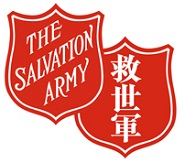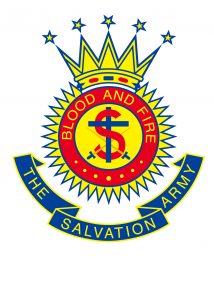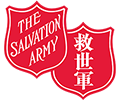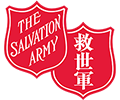Doctrines of The Salvation Army
- We believe that the Scriptures of the Old and New Testaments were given by inspiration of God, and that they only constitute the Divine rule of Christian faith and practice.
- We believe that there is only one God, who is infinitely perfect, the Creator, Preserver, and Governor of all things, and who is the only proper object of religious worship.
- We believe that there are three persons in the Godhead – the Father, the Son and the Holy Ghost, undivided in essence and co-equal in power and glory.
- We believe that in the person of Jesus Christ the Divine and human natures are united, so that He is truly and properly God and truly and properly man.
- We believe that our first parents were created in a state of innocency, but by their disobedience they lost their purity and happiness, and that in consequence of their fall all men have become sinners, totally depraved, and as such are justly exposed to the wrath of God.
- We believe that the Lord Jesus Christ has by His suffering and death made an atonement for the whole world so that whosoever will may be saved.
- We believe that repentance towards God, faith in our Lord Jesus Christ, and regeneration by the Holy Spirit are necessary to salvation.
- We believe that we are justified by grace through faith in our Lord Jesus Christ and that he that believeth hath the witness in himself.
- We believe that continuance in a state of salvation depends upon continued obedient faith in Christ.
- We believe that it is the privilege of all believers to be wholly sanctified, and that their whole spirit and soul and body may be preserved blameless unto the coming of our Lord Jesus Christ.
- We believe in the immortality of the soul; in the resurrection of the body; in the general judgment at the end of the world; in the eternal happiness of the righteous; and in the endless punishment of the wicked.
Symbols of The Salvation Army
Like any church or organisation, the Army has a number of symbols, each of which provides some explanation of its beliefs and purposes.

The Red Shield is a symbol of Salvation Army service. It represents the shield we provide to people in need of help including the Army’s social welfare, educational, community services and emergency relief work. The language may change according to different countries or areas, but the commitment to serving the needs of people with Christian love and compassion remains the same throughout the world.

The Crest has been in use since 1878. Its emblems set forth the leading doctrines of The Salvation Army as follows:
- The crown speaks of God’s reward for His faithful people
- The sun (the surround) represents the light and fire of the Holy Spirit.
- The cross of Jesus stands at the centre of the crest and the Salvationist’s faith
- The ‘S’stands for salvation from sin
- The swords represent the fight against sin
- The shots (seven dots on the circle) stand for the truths of the gospel
- “Blood and Fire” is the motto of The Salvation Army. This describes the blood of Jesus shed on the cross to save all people, and the fire of the Holy Spirit which purifies believers

The Flag was first introduced by Catherine Booth in 1878. The flag itself is not sacred, but it serves as a rallying point for Salvationists everywhere. The colours of the flag are symbols of our three fundamental beliefs. The blue flows out the purity of God. The red reminds us about the blood of Jesus. The yellow star at the centre sparkles with the fire of the Holy Spirit.

The Salute is unique for Salvationists, with the first finger of the right hand raised above the shoulder, pointing upwards. The salute reminds each other that only the heaven is our everlasting home, and testifies the resolve to make our way heavenwards. The Army salute also helps to identify us as Salvationists.
The Salvation Army Uniform reflects the military principles upon which the Army is organised. It serves three purposes: internally its use provides a sense of identity and indicates membership; externally it provides a widely recognised symbol of availability and service; internationally it is the most recognised and recognisable cultural icon for Salvationists, part of the glue that holds the denomination together.


